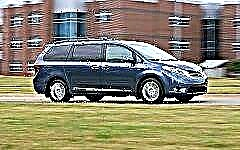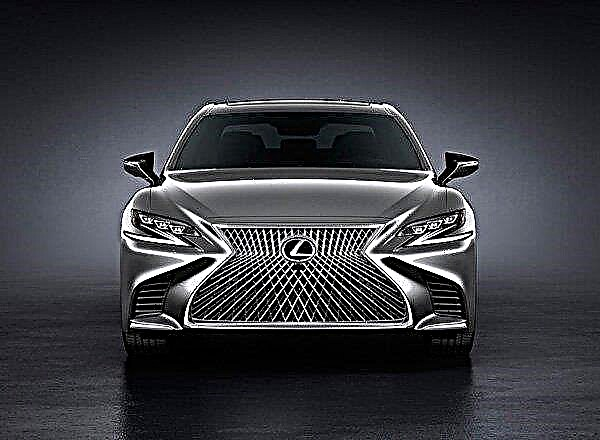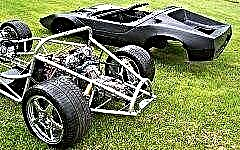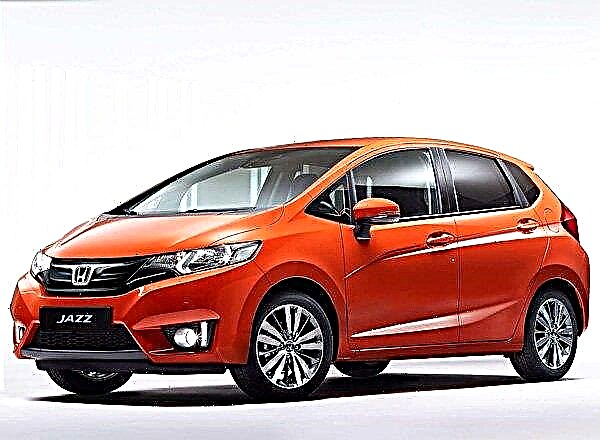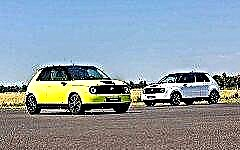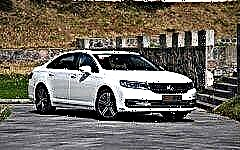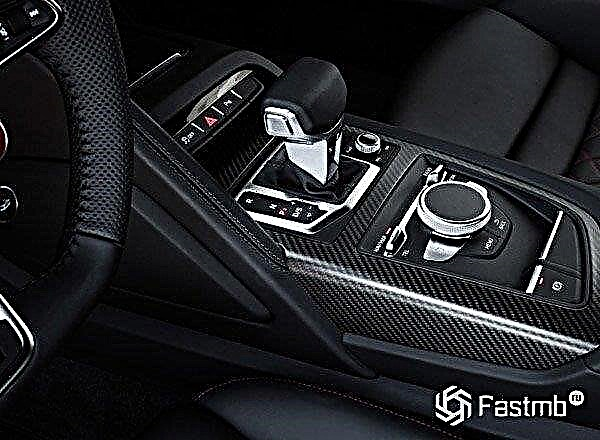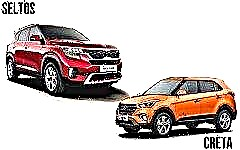

The content of the article:
- Exterior of Kia Tusker and Hyundai Creta
- Driving characteristics of the Kia Tusker vs Hyundai Creta
- Engine and transmission Kia Tusker vs Hyundai Creta
- Interior and configuration of Kia Tasker and Hyundai Creta
When planning to enter the Russian market for the Kia Seltos crossover, Korean automakers are trying to correct their marketing mistake, which consists in underestimating the attractiveness of the subcompact segment.
The new crossover from Kia is called Seltos in North America, but for the Russian language the ending "os" is recognized as dissonant, so motorists were asked to choose a different name. The probable ones included Trazor, Tusker, SP-Z and Trailster.
The car was conditionally named Tusker, which means "elephant with large tusks." Why? Because, first of all, the subcompact crossover is focused on the Indian market, and only then on the Russian one.
The Kaliningrad plant "Avtodor" is ready to start producing this "elephant" crossover in the amount of up to 100 thousand cars annually, christened with a light hand and the evil language of Internet users "Cretoy from Kia". This is due to the very large similarities between the Kia Tusker and Hyundai Creta, and their inevitable competition.
The Tusker is a little more than just a budget car, its equipment and trim are more interesting, the platform is more modern, the interior and trunk are more spacious, and the electronics are fresher. Only now, these cars will be able to meet on the streets of Russia only a year later, when Hyundai Creta has already passed into the category of obsolete models, and between the years of appearance there will be a seven-year gap.
By allowing Creta to be the first to enter the market, Kia has the ability to prepare Tusker for sales through a hyped advertising campaign and price advantage.
The production of the new Kia Tusker has begun at the Korean factory facilities in Anatpur (India). The first cars go first to the Indian market, and then they will go on sale to other countries.
According to the head of the Kia representative office in Russia, Mr. Jong Won Jong, the new car will be the best offer in the family of urban subcompact crossovers focused on the specific needs of Russian consumers.
The expected cost of the basic Comfort configuration is forecasted in the range of 850,000 to 900,000 rubles. This is cheaper than the Hyundai Creta sold, which costs between 900,000 and 1,200,000 rubles.
Taking into account the fact that the budget models of the segment cost about the same - from 715,000 for Duster to 904,000 - for Renault Kaptur, it can be assumed that the novelty of the Korean car industry will become very popular.
Exterior of Kia Tusker and Hyundai Creta

In the photo: the appearance of the Kia Tusker
The new generation of Hyundai Creta differs externally from the Kia Tusker with minor design touches, while the proportions and silhouettes of the cars completely coincide. Even the new Creta platform is built on the same base as Tusker.
The length, height, wheelbases and ground clearance of competing machines are the same: 4270/1630/2590/190 mm. The Kia Tusker is 58mm wider. The size of the trunk in the "Indian" version is 498 liters, in the Russian - 433 liters due to the storage of a full-size spare wheel. The Korean competitor has a slightly smaller trunk, rated at 402 liters.
With the same base, the modest and unassuming outwardly Creta still differs from the Tusker, in some way inferior, and in some superior. The difference in crossovers is manifested in the level of equipment of various configurations, which have a different effect on the practicality of the car and the convenience of its operation.
On the "faces" of crossovers, headlights, foglights and daytime running lights are located in the same way, at the same distance from the road. The volume of the air intakes is also similar, which will allow the engines to operate under the same conditions.
The difference was the difference in the length of the hoods. At Creta, the hood is extended to the radiator grille with a chrome-plated top, the bend and edges of the hood can therefore be damaged by stones flying from under the wheels.
For Tusker, there is a plastic insert between the hood and the radiator grille, shock-resistant, made in the same color scheme with the body. The practicality of each solution will become clear only during operation.
The suspension for both cars is the same, in front of the racks are implemented "according to MacPherson", at the rear they install a twisting beam for front-wheel drive cars and a multi-link one for all-wheel drive.
Koreans claim that Tusker is made on the platform of the modern "relative" Hyundai Kona, implying a much higher level of equipment, greater attention to design and details, but fundamentally from Creta in the hardware there are no innovations, visually the levers of the rear of the cars are indistinguishable.
The Kia KX3 crossover is called the Creta analogue. The cars at the back are slightly stylistically different. For Hyundai, headlights are used a la rear jeans pockets, and Kia preferred to make the optics in a horizontal design, merging it with a chrome decorative strip together.
The Creta trunk opening can be inconvenient during the loading / loading process, injuring the luggage with protruding tapering lights. There is no rib where it is planned to mount the license plate of the car, so the likelihood of contamination of the license plate is much higher. Moreover, it will be located lower, the dirt will fly stronger.
The rear fog lights are also located lower on the Creta, but they will be seen better in bad weather.
The crossover opening heights are equal, but the Tusker doors are narrower at the top. Experts believe that the Creta's rear seats will be more comfortable, and the missing wide pillar between the luggage racks and door windows will improve visibility.

In the photo: Hyundai Creta exterior
There is also a slight difference on the sidewalls of the cars. Creta sills are wider thanks to the use of plastic overlays. At Tusker they are even, but dirt will accumulate on them more.
Both Creta and Tusker will receive LED optics for headlights and lights. It is assumed that it will be equipped with luxury equipment, or it will be installed as an option.
Both cars, according to experts, will demonstrate better sound insulation and good passive safety.
Adapting Tusker to the Russian market, it is planned to implement a crossover with wheels of 16 and 17 inches, on which the car moves softer and smoother. The 18-inch wheels make a hard bump on bumps, bounce around corners.
Slightly more aggressive design gives Kia the look of a premium crossover, an abundance of decorative elements can attract the attention of buyers who choose cars of the same class in a small price range.
Complicated headlight architecture, embossed side skirts, enlarged wheel arches, a triangular rear body pillar, the ability to paint the car in two colors allow Tusker to bypass the competitor.
Driving characteristics of the Kia Tusker vs Hyundai Creta

The intrigue and lack of data makes it difficult to fully compare the performance characteristics of competing B-segment crossovers.
Creta:
- consumes fuel in the city / on the highway / in the combined cycle - 9 / 5.8 / 7 liters per 100 km;
- accelerates to "hundreds" in 12.3 seconds;
- the maximum speed is 167 km / h.
Kia Tusker of the simplest modification:
- consumes 7.0 liters of gasoline in the combined cycle, and when all-wheel drive is installed, the consumption increases per liter;
- accelerates to "hundreds" in 12.3 seconds;
- the maximum speed is 169 km / h.
Indicators largely depend on the type of transmission; the installation of a Kia automatic transmission becomes heavier by a hundred kilograms.
The second unconditional advantage of the Tusker, favorably shaded by the upgraded platform, will be better handling compared to the Creta.
Engine and transmission Kia Tusker vs Hyundai Creta

In the photo: Hyundai Creta engine
The base engines look similar too - four-cylinder, sixteen-valve engines with roughly equal horsepower. Engine displacement and environmental standards differ. The Tusker engine has a Euro 5 standard and a volume of 1600 cm2, the Creta has Euro 6 and 1591 cm2.
Comparing the new generation Creta and the yet to be produced Tusker, it is noted that the engines and gearboxes will be the same.
Creta will acquire a line of motors of three types of units. It will include a 1.6T-GDI turbocharged gasoline engine (177 hp), a two-liter aspirated engine (149 hp) and a 1.6-liter turbodiesel (136 hp).
The transmission will also be offered in three types, but so far there is no understanding which ones will reach Russia. While it is known about a seven-speed "robot" with two clutches, a six-speed "automatic" and a variator. About "mechanics" no one mentions anything, but no one says that it will not be. Four-wheel drive is optional.
Kia Tusker is planned to be released with 1.6 and 2-liter engines of 121/150 hp, aggregated with six-speed "mechanics" or "automatic". It is possible to connect four-wheel drive to the crossover.
The diagonal suspension of the suspensions compensates for their small travel due to a good imitation of locks. But the robotic transmission turns out to be powerless in off-road conditions, the rollback occurs even when keeping the foot on the brake.
Interior and configuration of Kia Tasker and Hyundai Creta

The exterior of the Creta, dull and dull, is offset by a sleek and technologically advanced interior.
It uses expensive finishing materials, its design is close to the "high-tech" Tusker style. Top configurations Creta will be equipped with a multimedia system with a 10.2-inch touchscreen, divided into sectors. The driver will see one information, and the passenger will see another.
It is possible to equip the car with an additional 8-inch projection monitor, which will be placed above the dashboard.
The front panel, digital dashboard and multimedia with a touchscreen look pleasant and ergonomic. The multimedia system was tied not only to the music, but also to the functions responsible for comfort.
There is a new steering wheel, slightly truncated, but easy to use. The selector washer allows you to select individual parameters for driving on different road surfaces.

The equipment of the top-end Tusker trim levels is almost equivalent to the Kia Sportage:
- front seats with electric drive;
- adaptive cruise control;
- single-zone climate control;
- comfortable hatch;
- numerous assistants for safe driving (auto braking, lane control, collision warning, blind spot interference);
- heated rear seats and steering wheel;
- three USB ports and wireless charging;
- armrest adjustment;
- "Handbrake" on electromechanics with Auto Hold option.
The rear-view camera, however, produces a picture of poor resolution. You can choose from different options for the front panel overlays - gloss black, aluminum imitation. The seats are also available in fabric and artificial leather upholstery.
Another trump card of Tusker lies in the initial "sharpening" for the generation of "millennials" - young people, active and ambitious, following the trends in automotive fashion and who value convenience above all else.
They will love the two-tone interior with large LCD displays, stylish and bringing the dream of premium crossovers closer.
Conclusion
So which is better? The cars are almost identical, and their fate in the Russian market depends on the aggressiveness of promotions and the size of consumers' wallets.
Automotive experts predict Tusker's victory over the outdated, boring design Creta. Although a different outcome is likely - Tusker will cooperate with Creta, and the Korean auto industry will occupy the market for inexpensive crossovers, pushing out other competitors.

